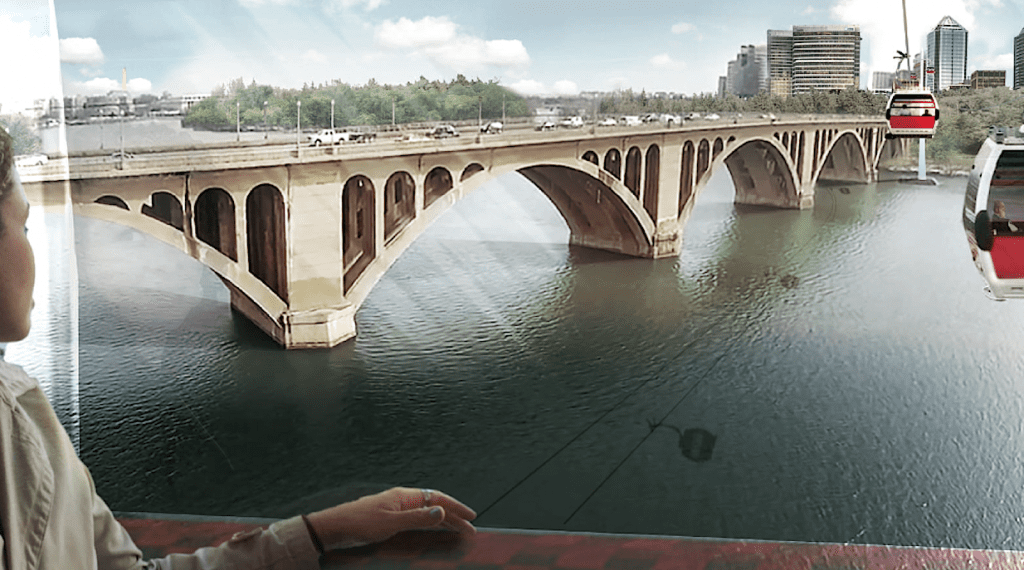Gondola Not Pie in the Sky, Study Concludes
By • November 9, 2016 0 1160

The comprehensive feasibility study for a gondola over the Potomac, linking Georgetown and Rosslyn, Virginia, was presented to the public last Thursday, Nov. 3, at the newly refurbished Georgetown Theater on Wisconsin Avenue. The material was almost overwhelming. Five architectural, engineering, aerial transportation, community impact and government relations experts offered a detailed analysis, complete with slides and graphs, of the challenges and options. The executive directors of the Rosslyn and Georgetown Business Improvement Districts then answered questions from an audience of more than 100.
The bottom line: a Georgetown-Rosslyn gondola — a system in which relatively small cars circulate (as opposed to an aerial tramway, in which a railcar-like vehicle goes back and forth) — is feasible. Engineers found “no fatal flaws,” structurally speaking.
The choice of possible station sites was narrowed to one an easy walk to and from the Rosslyn Metro station and the other below the present Georgetown Car Barn and near the Exxon station just off the end of Key Bridge.
The construction cost was estimated to be $80 to $90 million — “less than other public transit modes,” said the experts. The operating cost would be about $3.25 million per year, a net cost “significantly less than other public transit modes with similar performance metrics.”
What would the timeframe be? Six-plus years. The approval process could easily take up to three or four years given the number of governmental and nongovernmental jurisdictions involved. The actual construction time was estimated at two-plus years.
The gondola passenger cars, each seating eight to 15 people, would move in an oval, spaced roughly a minute behind one another. Renderings of the system as seen from the Georgetown waterfront made it appear to be scarcely visible: little bubble cars seemingly floating in the air, hanging on a barely seen line — even though, according to Georgetown BID Director Joe Sternlieb, the cable in the drawing had been enhanced. From the trail side of the bridge, the view was not jolting.
“The gondolas are silent while in the air,” the panel of experts claimed. They would sag to fewer than 100 feet above the bridge at the midpoint and slow to half-speed during non-commute hours, so that passengers could enjoy the view. According to Rosslyn BID President Mary-Claire Burick, the gondola would ease the commute and greatly enhance the attractiveness of doing business and shopping around the two landing sites.
The next immediate step is to complete a required environmental impact study, with the extended approval process to follow. All that, not to mention implementation, will require multi-jurisdictional collaboration and public-private partnerships, according to the BID heads, who said that the public would be consulted at every point.
There is no money for any of this at present. Funds will have to be raised through a variety of grants, investments and possibly tax subsidies. But the $200,000 raised by the BIDs for the feasibility study seems to have been well spent. The multitude of complex questions about every aspect of the project had to be addressed and answered. The complete report is online at georgetownrosslyngondola.com.

